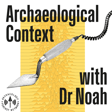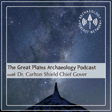
Meat for Warriors - The diet of Celtic individuals from the Iron Age – With Dr Sandra Lösch (S01E04)
As the title already indicates, in this episode we examine the diet of “Celtic warriors”. First, I present the late Iron Age cemetery of Münsingen and highlight why this site from Switzerland became such an important reverence point for Celtic archaeology: because based on the evolution of the characteristics of the fibulae grave goods a so-called typo-chronology could be established. Then we talk with Dr. Sandra Lösch, who was the supervisor of a recent research project on the diet of these late Iron Age individuals.
Reverences:
· Moghaddam et al. (2016), A bioarchaeological approach to the Iron Age in Switzerland: stable isotope analyses (δ13C, δ15N, δ34S) of human remains
· Moghaddam et al. (2016), Zur Ernährung und Sozialstratigraphie der Kelten aus Münsingen-Rain
· Moghaddam et al. (2014), Social stratigraphy in Late Iron Age Switzerland: stable carbon, nitrogen and sulphur isotope analysis of human remains from Münsingen
· Martin-Kilchner (1973), Zur Tracht- und Beigabensitte im keltischen Gräberfeld von Münsingen-Rain
· Hodson (1968), The La Tène Cemetery at Münsingen-Rain
Links: https://23minarch.com
Support: https://www.patreon.com/23minarch





